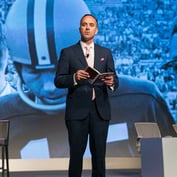The U.S. economy, forecasters tell us, may finally be reaching bottom. But the leading financial indicators pointing to a recovery evidently don’t include sales of non-qualified deferred compensation plans. Long a favored vehicle of businesses owners for recruiting, retaining and rewarding senior execs, the plans, sources tell National Underwriter, remain in the doldrums.
“Many businesses don’t have big dollars to put into deferred plans, so they’re more discriminating, covering fewer execs than they have in past,” says Richard Levitz, an executive vice president at GCG Financial, Bannockburn, Ill. “Now they may only cover 5 or 6 execs versus 10 or more previously. The key issue here is cash flow–or the lack thereof.”
Shad Reynolds, a certified financial planner and principal of Capstone Financial Partners, Atlanta, Ga., is more emphatic. “The market for deferred comp has almost completely dried up,” he says. “There is not enough revenue beyond the normal amounts of business being generated to warrant deferred comp for the top-hat guys. A lot of folks are looking at alternative funding vehicles, including executive bonus plans. That’s the direction in which we’ve taken our business.”
Non-qualified deferred compensation–a special benefit for corporate executives and other highly compensated employees that promises a fixed income for a specified period following retirement–is most commonly funded with cash value life insurance. Among the reasons: The policies assure the plan that their benefits will not be endangered by the employer’s cash flow demands. The products also provide a tax-deferred buildup of cash value and tax-free distribution of benefits.
Since the onset of the recession in late 2007, market-watchers say, the plans have become a harder sell, particularly to closely held small businesses. Advisors cite businesses’ increased financial difficulties and the uncertain economic outlook as key reasons for depressed sales. They additionally point to the increased cost of plan administration since the release of the 409A regulations, a section of the Internal Revenue Code governing deferred comp.
Also weighing on business owners and execs, observers suggest, is the prospect of congressional legislation that would make the plans financially unpalatable.
Says Joe Ouellette, CEO at San Diego, Calif.-based Excelsior Financial Network: “There may be less appetite for execs to defer income via deferral plans because of the tax situation and the likelihood that execs will be dealing with much higher marginal rates when they retire. I don’t think this country can go forward with current tax rates given all the money we’re printing.”
Michael Sego a principal of the O.N. Equity Sales Co. (ONESCO), Cincinnati, Ohio, says he’s as much concerned about congressional legislation that would disallow interest deductions for certain businesses. For those companies that depend on such deductions to help fund executive comp arrangements, the legislation would thus be a disincentive to doing so.
Albert “Budd” Schiff, CEO of NYLEX Benefits, a Stamford, Conn.-based arm of New York Life, sees a more nuanced picture. Deferred comp plans, he says, remain in demand among the businesses NYLEX services, including major and mid-size U.S. corporations, professional firms, banks and hospitals. But he notes also that businesses are lending a more conservative tilt to the investment allocations of the funding vehicles. Chief reason: The big hit taken by plan portfolios, many of which are down 40% or more in value since the onset of the downturn.
“Three years ago, when we looked at how people were allocating their accounts, the primary focus was on investment amount, whereas today the main focus is on how I protect my principal,” says Schiff. “So there is a big shift towards conservative investing, more protection and more guarantees on the downside. And given businesses’ greater cash flow challenges, execs are more concerned about securing non-qualified plans from the general creditors of their companies.”
The more conservative orientation, adds Schiff, is reflected in increased demand for fixed-indexed-based life insurance policies to informally fund non-qualified plans. Like their annuity counterparts, the policies are tied to an index, such as the S&P 500, enabling the contracts’ cash value to rise in tandem with the index up to a stipulated market cap. So, for example, if the S&P rises by 20%, the contract value may increase to a 12% cap. But if the market dips by 10%, there’s no loss in the policy’s value.
Businesses are also buying universal life or whole life policies. Many firms that can afford to, says Sego, are also funding the contracts aggressively. The benefit: In the event the business suffers a cash shortfall, it can draw on the cash-rich policies to pay premiums during months in which it needs to skip payments.
One product that has suffered a big dip in sales since the downturn is variable life. “A number of my competitors that market these products for deferred comp plans are feeling sorry they did so because of steep market losses,” says Daniel Balogh, a chartered life underwriter and a principal of the Executive Benefits Group at SWBC Investment Services, San Antonio, Tex. “I’m running into them left and right. The policies are underwater.”








 September 20, 2009 at 08:00 PM
September 20, 2009 at 08:00 PM










